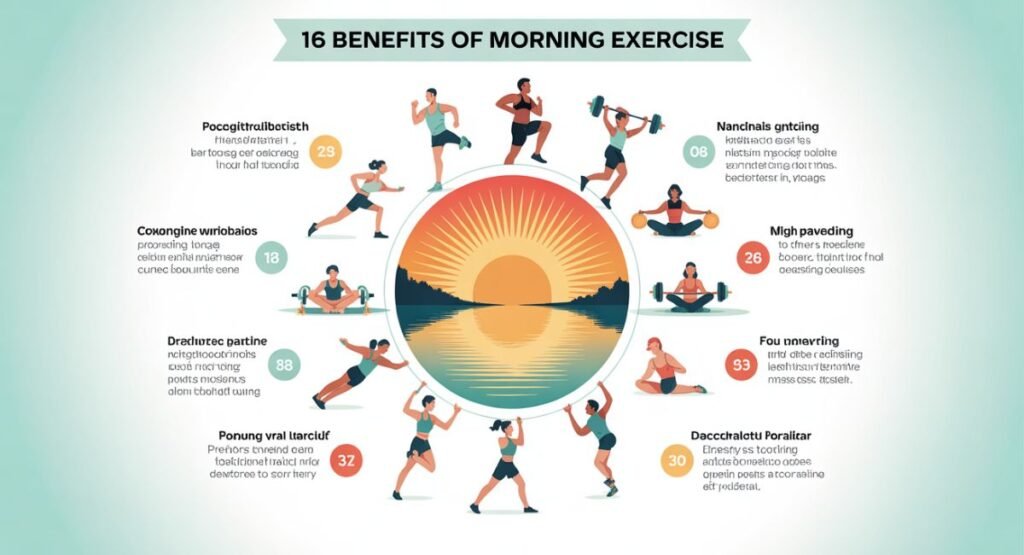Introduction
The right daily walking distance for fat loss depends on your goals, fitness level, and pace. Research suggests that combining caloric deficit and energy balance with walking creates steady, safe results. Unlike extreme exercise, walking is gentle, lowers cardiovascular disease risk reduction, and boosts exercise adherence and consistency. This makes it a realistic option for long-term health.
Experts at the CDC weight management guidelines confirm that regular moderate-intensity aerobic exercise like walking supports safe weekly weight loss (1–2 lbs). The beauty of walking lies in its adaptability. Whether you are a beginner or advanced, adjusting walking pace and intensity can change outcomes. Let’s explore how many miles to walk for fat loss, how to personalize a plan, and what science says about real results.

The Science of Walking for Weight Loss
The link between calories burned walking a mile and fat loss is clear. On average, a person burns about 100 calories per mile, or an average of 0.04 calories burned per step. This means around 3,500 calories burned equals one pound of fat, so walking daily creates a steady energy balance for weight loss.
Walking also impacts metabolic adaptations by improving how your body uses fuel. Regular walking lowers insulin resistance, supports visceral fat reduction, and increases fat oxidation during rest. Combined with a controlled diet, walking creates a reliable pathway to muscle preservation during fat loss while reducing body fat.
How Many Miles Should You Walk a Day to Lose Weight?

Most studies suggest walking 3 to 5 miles daily supports safe weekly weight loss (1–2 lbs) when paired with a balanced diet. Beginners can aim for how many steps equal a mile (around 2,000 steps per mile) and gradually build up. For many, steps to lose weight per day reach around 8,000–10,000.
However, the right amount depends on body type, pace, and fitness. Faster brisk walking benefits more than strolling. A 160-pound person walking 4 miles briskly may burn 400–500 calories, supporting incremental mileage increase each week. Balancing diet and activity makes the difference.
Personalized Walking Distance: Finding Your Sweet Spot
Everyone’s personalized walking prescription depends on age, current fitness, and goals. For instance, someone seeking walking for belly fat reduction might need longer distances compared to someone maintaining weight. Older adults may focus on joint-friendly mileage and bone density and weight-bearing activity.
Using calorie deficit math helps set targets. For example:
| Weight Goal | Daily Deficit Needed | Walking Required |
| Lose 1 lb/week | 500 calories | ~5 miles/day |
| Lose 2 lbs/week | 1000 calories | ~8–10 miles/day |
This illustrates why combining diet with walking is smarter than relying on mileage alone.
Walking vs Other Activities: Which Burns More Fat?
The debate of walking vs running for weight loss often arises. Running burns more calories per minute, but walking is easier on joints and improves exercise adherence and consistency. Over time, consistent walking can lead to equal or greater fat loss.
When comparing walking vs cycling, cycling may burn slightly more calories per session. Yet, walking has the unique benefit of bone density and weight-bearing activity, lowering osteoporosis risks while also improving resting heart rate and endurance.
Progressive Walking Plans for Every Level
A progressive walking program ensures safe improvement. Beginners can start with a walking workout plan for beginners, covering 1–2 miles at an easy pace, then gradually increase distance. The goal is incremental mileage increase without injury.
Intermediate walkers may build stamina with 4–6 miles daily, while advanced walkers push pace, add intervals, or combine with hill walking calorie burn sessions. These layers make walking adaptable at every stage.

Beyond Miles: Why Intensity and Terrain Matter
Walking farther is not the only factor. Walking pace and intensity change results dramatically. Brisk walking benefits include higher calorie burn, better insulin sensitivity and blood sugar control, and faster fat loss compared to slow walking.
Terrain also plays a role. Hills, stairs, or hill walking calorie burn workouts increase energy demand. Outdoor hikes challenge more muscles, improving cortisol reduction and stress management, while boosting cardiovascular disease risk reduction naturally.
Walking Workouts That Boost Fat Loss
A treadmill incline workout simulates outdoor hills, raising calorie burn and supporting visceral fat reduction. This style of training also improves muscle preservation during fat loss.
Interval walking involves alternating brisk and slow periods, which triggers metabolic adaptations and supports faster fat loss. Hill walking or hiking not only burns more calories but also improves endurance, making it an excellent option for long-term results.

Real Results: What to Expect and When
Walking creates steady changes. In the first 2 weeks, you build the habit and start cortisol reduction and stress management. By weeks 4–6, metabolic adaptations occur and stamina improves. Visible changes in clothing fit may show around 8–12 weeks.
Over 6 months, DEXA body composition scan data often shows measurable visceral fat reduction. These gradual shifts highlight why walking supports sustainable weight loss through walking, rather than quick fixes.
Tracking Progress the Right Way
Many walkers make the mistake of relying only on the scale. Weight fluctuates daily. Instead, tracking waist size, endurance, or a DEXA body composition scan gives a better picture.
Using tech like step counters, apps, and GPS watches helps measure average calories burned per step and total miles. These tools align with CDC weight management guidelines, helping you stay on track for real progress.

Maximizing Your Walks: Smart Strategies
Timing matters. Morning walks jumpstart metabolism. Afternoon walks at lunch fight fatigue. Evening walks lower cortisol reduction and stress management and prepare you for restful sleep.
Weatherproof hacks, like indoor treadmill use, resistance walking, or mall walking, help maintain exercise adherence and consistency regardless of weather. Consistency is more important than perfection.
Common Mistakes That Stall Weight Loss
Eating back all the calories burned, known as the compensation trap, cancels out progress. Another mistake is sticking to the same plateau pace without pushing distance or intensity.
The weekend warrior problem also hurts results. Irregular walking fails to create the energy balance needed for safe weekly weight loss (1–2 lbs). Small daily walks work far better than rare long ones.
Extra Health Benefits of Daily Walking
Beyond fat loss, walking improves walking for cardiovascular health by lowering blood pressure and enhancing resting heart rate improvement. It strengthens bones, muscles, and posture.
Mentally, walking enhances mood, supports cortisol reduction and stress management, and boosts focus. Physically, it aids digestion, improves insulin sensitivity and blood sugar control, and enhances resilience against disease.
Frequently Asked Questions About Walking for Weight Loss
Is walking 3 miles a day enough to lose weight? Yes, with a diet deficit, it supports fat loss. How much should I walk to lose 2 pounds per week? About 8–10 miles daily plus calorie control.
Can walking reduce belly fat? Yes, steady walking helps walking for belly fat reduction and lowers visceral fat. Is walking better than running for weight loss? Walking is safer long-term and improves exercise adherence and consistency compared to running.
The Bottom Line: Your Walking Prescription
The ideal personalized walking prescription ranges between 3 and 6 miles daily for most people. The real secret is consistency, gradual incremental mileage increase, and pairing walking with diet for caloric deficit and energy balance.
Walking is more than weight loss—it builds health, reduces disease risk, and enhances life. Step by step, mile by mile, you can transform your body and mind through sustainable weight loss through walking.




Pingback: Health Benefits of Boiled Eggs: A Complete Guide